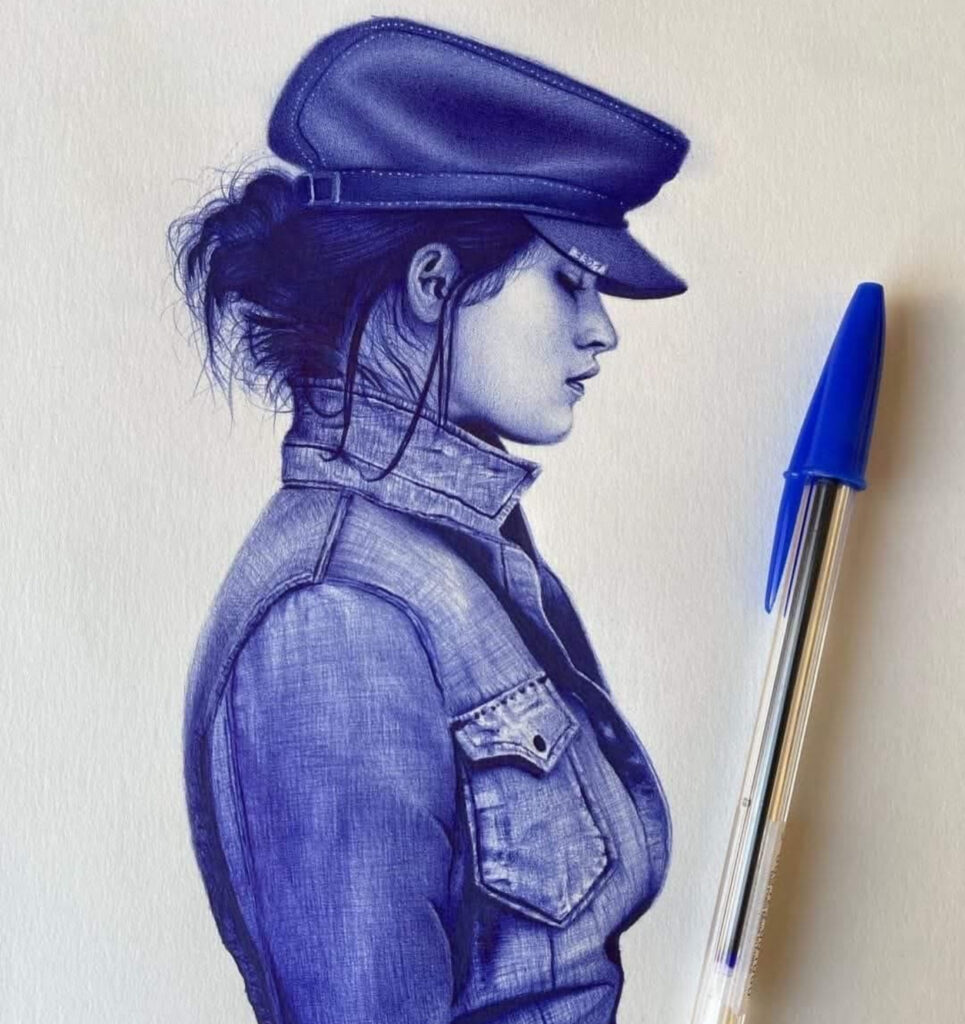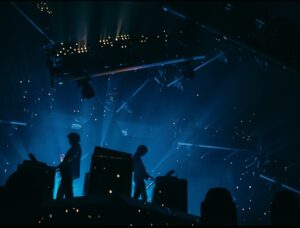Art has always been a powerful medium for self-expression, storytelling, and cultural preservation. Among the various contemporary artists who have harnessed social media to showcase their work, @pure.drawing stands out for their meticulous blue pen drawings. With a distinctive style, the artist—known as Paulus Architect—has gained a substantial following on Instagram. Their tagline, “My Blue Pen… it holds my Dream,” encapsulates the emotional and creative depth behind their work.
This essay explores the origins, artistic techniques, and broader cultural significance of @pure.drawing’s work. It also delves into the historical context of pen drawing as a medium, examining how the artist’s location, influences, and dedication have shaped their artistic journey.
Background and Early Life
While there is limited biographical information available about Paulus Architect, the moniker suggests a background in architecture. This would explain the precision and technical skill evident in their drawings, which often reflect a deep understanding of perspective, structure, and form.
Architects often rely on line work, shading, and spatial awareness, and these elements are heavily present in Paulus’s work. Their focus on monochromatic blue pen sketches indicates an appreciation for minimalist yet highly detailed compositions.
Geographic and Cultural Influences
Though the specific location of Paulus Architect remains unclear, their art suggests influences from a broad spectrum of global architectural styles. The blue pen technique has been particularly popular among European and Asian artists who specialize in architectural sketches. Artists in regions such as Indonesia, Japan, and Eastern Europe have historically leaned toward intricate ink-based art styles, often incorporating realism and surrealism, both of which are evident in @pure.drawing’s work.
Given their apparent connection to architectural design, it is likely that Paulus has been exposed to diverse architectural landscapes, drawing inspiration from classical, gothic, baroque, and modernist structures.
The Uniqueness of Ballpoint Pen Art
One of the most striking aspects of @pure.drawing’s work is the exclusive use of a blue ballpoint pen. Ballpoint pen art is a challenging medium due to its permanent nature—unlike pencil or digital tools, errors cannot be erased. This forces artists to work with extreme precision and control.
The use of a blue ballpoint pen is significant for several reasons:
•Precision and Detail: Ballpoint pens allow for incredibly fine lines and shading, making them ideal for intricate designs.
•Layering and Depth: Through cross-hatching and stippling, an artist can create a sense of depth and dimension.
•Monochromatic Aesthetic: The singular use of blue ink creates a cohesive and striking visual effect, emphasizing form over color.
The Role of Architectural Drawing Techniques
Given their apparent background in architecture, Paulus employs several fundamental architectural drawing techniques:
•One-Point and Two-Point Perspective: Many of their drawings depict vast cityscapes or detailed structures using accurate perspective techniques.
•Cross-Hatching and Stippling: These techniques are used to create shadows and textures.
•Linear Composition: The use of continuous and deliberate lines contributes to the precise nature of their work.
Many of their drawings also include elements of surrealism, blending realistic structures with dream-like distortions, which adds an imaginative quality to their architectural renderings.
The Origins of Pen and Ink Drawing
The tradition of pen and ink drawing dates back thousands of years. Ancient Chinese and Japanese artists used ink-based techniques to create delicate, expressive landscapes and figures. Similarly, Renaissance artists such as Leonardo da Vinci and Michelangelo frequently used ink for anatomical studies and architectural blueprints.
By the 19th and 20th centuries, technical pen drawings became essential for architects, engineers, and illustrators. These early technical sketches closely resemble the fine-line work seen in @pure.drawing’s art.
The Rise of Ballpoint Pen as a Fine Art Medium
The ballpoint pen was invented in the late 19th century but became widely available in the mid-20th century. Initially used as a practical writing tool, it eventually found its way into the world of art. Artists began experimenting with ballpoint pens in the 1950s, appreciating the medium’s ability to produce controlled and detailed line work.
Some notable artists who have used ballpoint pens include:
•Juan Francisco Casas (Spain): Known for his large-scale photorealistic blue pen drawings.
•James Mylne (UK): A master of hyper-realistic ballpoint pen portraits.
•Il Lee (South Korea): Famous for abstract blue pen compositions.
Paulus Architect’s work falls within this tradition, blending realism, surrealism, and architectural precision to create a unique and contemporary interpretation of ballpoint pen art.
The Impression and Reception of @pure.drawing’s Work
Social Media and the Digital Art Renaissance
Instagram has become a crucial platform for contemporary artists, allowing them to bypass traditional gallery systems and reach a global audience directly. @pure.drawing has leveraged this digital space effectively, gaining thousands of followers through consistent, high-quality artwork.
Some factors contributing to their popularity include:
•High engagement with followers: Responding to comments and sharing works-in-progress.
•Process Videos: Many artists on Instagram grow their following by sharing time-lapse videos of their drawing process.
•Aesthetic Consistency: The cohesive blue pen theme creates a recognizable brand identity.
Artistic Legacy and Influence
As ballpoint pen art continues to gain recognition, artists like Paulus Architect contribute to the evolution of the medium. Their work serves as inspiration for aspiring artists who wish to explore pen-and-ink techniques beyond traditional pencil or digital art.
The precision and dedication evident in their work reinforce the idea that fine art does not require expensive materials—a simple ballpoint pen can produce breathtakingly intricate pieces when wielded with skill and patience.
The Future of @pure.drawing and Ballpoint Art
The work of @pure.drawing represents a fusion of architectural precision, artistic patience, and social media engagement. Their use of blue pen as a primary medium places them within a niche but growing community of artists who specialize in intricate ink-based compositions.
Looking ahead, the future of ballpoint pen art appears promising. More contemporary artists are experimenting with this medium, pushing its boundaries to create hyper-realistic and abstract works. With increasing digital exposure, artists like Paulus Architect may influence the next generation of architects, illustrators, and fine artists.
In an age where digital art dominates, @pure.drawing’s dedication to hand-drawn pen work serves as a testament to the enduring power of traditional mediums. Whether through intricate cityscapes or surreal architectural compositions, their art tells a story of patience, craftsmanship, and the boundless potential of a simple blue pen.
Key Takeaways
Paulus Architect (@pure.drawing) is a skilled ballpoint pen artist specializing in architectural and surrealist drawings.
Their precise, monochromatic work is influenced by architectural design techniques, suggesting a background in architecture or technical drawing.
Ballpoint pen art has a long history, evolving from technical drawing traditions to contemporary fine art.
Social media has played a significant role in their success, allowing them to reach a broad audience and establish a unique artistic identity.
Their work challenges traditional perceptions of fine art materials, proving that creativity and technical skill can transform even the simplest tools into masterpieces.
By continuing to push the boundaries of ballpoint pen art, @pure.drawing exemplifies the evolving relationship between tradition and innovation in contemporary art.
No comments yet.








